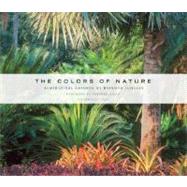
Raymond Jungles is the founder and principal of Jungles Landscape Architect in Miami, Florida.
Terence Riley is the director of the Miami Art Museum. He was formerly a chief curator at the Museum of Modern Art, New York. The author lives in Miami, FL.
The New copy of this book will include any supplemental materials advertised. Please check the title of the book to determine if it should include any access cards, study guides, lab manuals, CDs, etc.
The Used, Rental and eBook copies of this book are not guaranteed to include any supplemental materials. Typically, only the book itself is included. This is true even if the title states it includes any access cards, study guides, lab manuals, CDs, etc.
Excerpted from The Colors of Nature: Subtropical Gardens by Raymond Jungles by Raymond Jungles
All rights reserved by the original copyright owners. Excerpts are provided for display purposes only and may not be reproduced, reprinted or distributed without the written permission of the publisher.